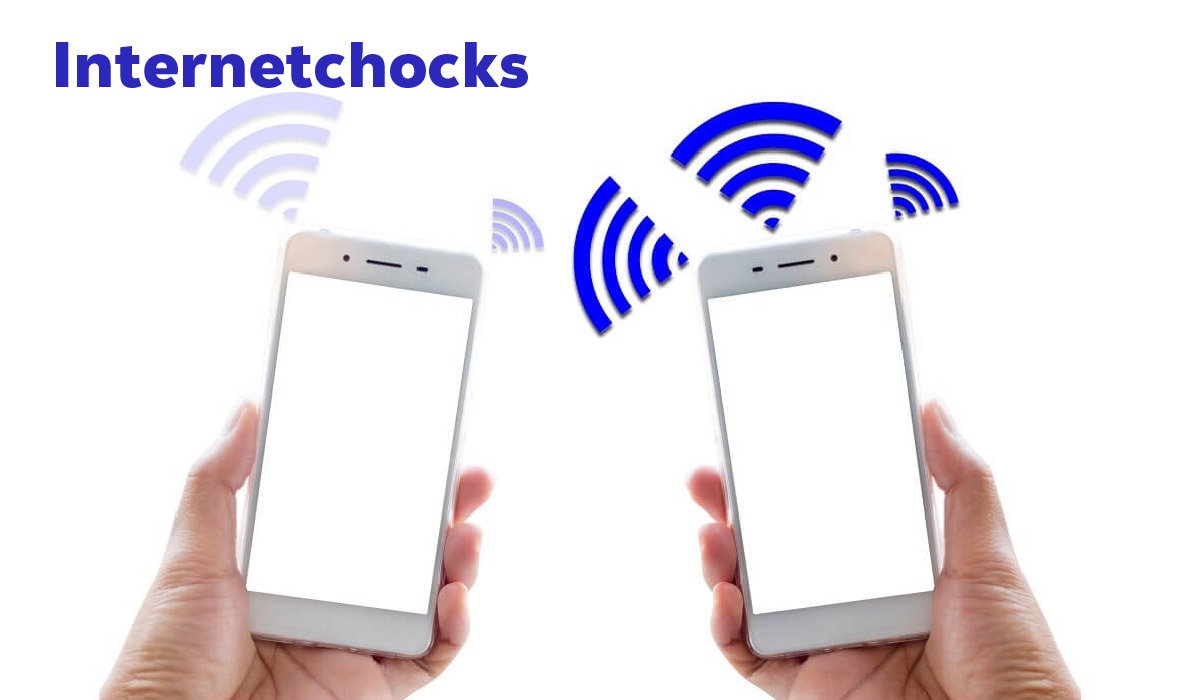Blog
Internetchocks Fix: Powerful Ways to Stop Annoying Internet Freezes

Imagine you’re in the middle of a crucial video meeting or trying to submit a time-sensitive assignment, and suddenly—everything freezes. The video lags, the screen goes blank, and your productivity crashes. This frustrating moment is a clear sign of what’s commonly referred to as internetchocks. In simple terms, internetchocks are those sudden, unexpected interruptions in your internet connection that cause apps to freeze, websites to load endlessly, or videos to buffer at the worst possible time. These chocks are not complete blackouts; instead, they are short-lived disruptions that are just enough to ruin your momentum.
In today’s fast-paced digital lifestyle where we rely on uninterrupted connectivity for work, education, entertainment, shopping, and communication, internetchocks can be more than just annoying—they can be genuinely damaging. Whether it’s a dropped Zoom call with a client, lag in your online game, or failed transaction at checkout, understanding and fixing these internetchocks is vital. This article provides a comprehensive guide on what causes them, how to fix them, and most importantly, how to prevent them from ruining your digital life.
Simple and Clear Definition of Internetchocks
To put it simply, internetchocks are sudden slowdowns, stutters, or momentary disconnects in your internet connection that disrupt your online activities. Unlike complete outages where your internet is entirely down, internetchocks typically occur in quick bursts. You may still be technically “connected,” but the experience is painful—webpages won’t load, video calls stutter, or YouTube plays at the lowest quality with endless buffering.
These issues can sneak up randomly or follow a pattern, such as during peak evening hours. The most common signs of internetchocks include slow-loading websites, high ping while gaming, poor video quality in streams, and disconnections in platforms like Zoom or Microsoft Teams. These disruptions may be localized to one device or room (localized chocks), affect the entire household (network-wide chocks), appear intermittently (temporary chocks), or persist over time due to faulty setups or ISP problems (persistent chocks). Understanding these different types is key to pinpointing and resolving the issue.
What Causes Internetchocks? Behind the Digital Bottlenecks
The root causes of internetchocks can vary widely, but many stem from basic networking challenges. One of the most frequent culprits is network congestion—especially during peak hours when everyone in your neighborhood is online streaming, gaming, or working remotely. The more people on the network, the smaller your slice of bandwidth. Another major factor is a weak Wi-Fi signal, which happens when your device is too far from the router or blocked by thick walls, floors, or even household appliances. Then comes the issue of outdated or faulty equipment like old modems, routers, or even damaged cables.
These bottlenecks choke your connection speed, leading to intermittent disruptions. ISP throttling is another hidden issue. Some internet service providers deliberately slow down your connection when you’re using too much data on certain apps, like Netflix or gaming platforms. Electromagnetic interference from microwaves, baby monitors, or even Bluetooth speakers can also disturb Wi-Fi signals, especially on crowded 2.4GHz channels. Lastly, software issues like outdated router firmware or conflicting apps on your device can silently sabotage your connection. Even extreme weather or infrastructure problems—like a fiber cut miles away—can create ripple effects that result in internetchocks.
Real-World Impact of Internetchocks on Daily Activities
The effects of internetchocks ripple through every area of modern digital life. For professionals working remotely, it means dropped video calls, corrupted uploads, and failed file syncs—all of which can damage work efficiency and reputation. Students relying on e-learning platforms may find their virtual classes interrupted, unable to access notes, or miss important submissions due to sudden disconnections. Streaming platforms like Netflix, Hulu, or YouTube become frustrating to use when you’re constantly staring at a buffering wheel. Online gamers are hit hard with lag, high ping, or full-on freezes, all of which make competitive gaming almost impossible.
Even daily tasks like online shopping or banking are affected—imagine your payment failing mid-checkout or your session timing out while transferring funds. Communication apps like WhatsApp, Skype, or Zoom also suffer—calls drop, voices get distorted, and video becomes pixelated. The most dangerous part is that internetchocks feel like minor nuisances, but when they occur frequently, they severely impact productivity, mental peace, and digital trust.
How to Identify If You Are Experiencing Internetchocks
Detecting internetchocks early is crucial to fixing them. The easiest way to start is by running speed tests using platforms like Speedtest.net or Fast.com. These tools help you compare your actual speed versus what you’re paying for. If there’s a huge drop, especially during peak hours, you’re likely facing congestion or throttling. Another method is to perform ping tests or use command line tools like “ping” and “tracert” to detect high latency and packet loss.
Analyzing router logs can also reveal frequent disconnects or DNS errors, which are signs of unstable connections. Observing the time patterns of disruptions helps too—if things get worse every evening, your area is probably congested. To isolate the issue further, compare your device’s performance on wired vs. wireless. If your Ethernet connection is smooth but Wi-Fi lags, the issue is likely signal-related. Keeping a simple activity log of when and how often internetchocks occur can also help in diagnosing recurring issues.
Easy Fixes You Can Try at Home to Stop Internetchocks
Before calling your ISP, there are several easy home remedies you can try to solve internetchocks. First, always restart your modem, router, and affected devices. This simple reset clears memory issues and often fixes temporary bugs. If the problem persists, try repositioning your router. Place it in a central, elevated area free from walls or metal furniture. Moving it away from electronic interference like microwaves can also help.
For critical tasks like meetings or gaming, switch to a wired Ethernet connection, which is more stable than Wi-Fi. You should also close background apps that might be hogging bandwidth—things like cloud backups, app updates, or even open browser tabs. If your household is streaming on multiple devices, consider reducing the resolution from 4K to 720p or limiting simultaneous streams. These small adjustments can dramatically improve connection consistency and prevent minor chocks from escalating into major outages.
Advanced Ways to Prevent Internetchocks Before They Begin
If basic fixes don’t solve your problem, it’s time to explore advanced solutions. First, look into upgrading your internet plan—especially if you’re working from home with multiple users. A higher bandwidth plan ensures smoother multitasking. Equally important is investing in a modern router that supports Wi-Fi 6, dual/tri-band technology, and Quality of Service (QoS) features to prioritize essential traffic.
For larger homes, mesh Wi-Fi systems can eliminate weak signal areas by spreading coverage evenly. Range extenders or Powerline adapters are also useful in boosting signals in specific rooms. Another tip is to change your Wi-Fi channel using your router settings, especially if your neighbors’ networks are crowding the same frequency. Most routers auto-select channels, but manual tuning often yields better results. These steps require a little investment but result in long-term stability and better digital quality of life.
Top Tools to Monitor and Diagnose Internetchocks
Several tech tools can help monitor, diagnose, and track internetchocks in real time. The most popular is Speedtest by Ookla, which measures download/upload speed and latency. PingPlotter is great for tracing packet loss over time and identifying which network node is causing the issue. NetSpot offers Wi-Fi heatmaps to find weak signal spots in your home. GlassWire helps visualize bandwidth usage, alerting you if apps are hogging data silently in the background.
DNS Benchmark helps test the speed and reliability of your DNS servers, which can affect browsing performance. And don’t forget about your router’s logs—most modern routers track errors, connection drops, and even signal interference. These tools, when used together, provide a complete picture of what’s going wrong and where to fix it.
SEO Strategies: How Website Owners Can Prevent Internetchocks
Website owners are also impacted by internetchocks, especially when poor site performance leads to user drop-offs. Start by optimizing your website speed—compress images, use minimal CSS/JavaScript, and implement lazy loading for faster rendering. Leverage browser and server caching to reduce reload times, and use Content Delivery Networks (CDNs) like Cloudflare to serve content from locations closer to the user. Also, ensure your website is mobile-friendly, as most internetchocks affect mobile users. Choose a reliable web hosting service with high uptime and responsive support. Google favors fast, stable, and mobile-optimized websites—so following these steps doesn’t just prevent chocks, it boosts your SEO and ranking as well.
What to Do If Your ISP Is Causing the Internetchocks
Sometimes, despite your best efforts, the source of internetchocks is your internet service provider (ISP). You can suspect this if your speed remains slow even after troubleshooting or if neighbors using the same ISP face similar issues. In such cases, collect evidence—run multiple speed tests, save screenshots, and note time-of-day patterns. When contacting your ISP, be specific about what you’re experiencing and provide this data. Ask them whether you’re being throttled or if there’s infrastructure work affecting your area. If the issue remains unresolved, consider switching ISPs, especially if fiber or better deals are available nearby. Your loyalty shouldn’t cost you your connectivity.
Internetchocks on Mobile Networks: Not Just a Wi-Fi Problem
Many people associate internetchocks with home Wi-Fi, but mobile data can also suffer. When too many users are connected to the same cell tower, you experience tower congestion, which slows down speed. Other causes include apps running in the background, low signal areas, and hardware limitations on older phones. To improve mobile connectivity, try toggling airplane mode, switching between 4G and 5G manually, or using Wi-Fi calling where available. You can also monitor your mobile data usage and disable apps that auto-refresh. In rural or crowded areas, switching to a network with better tower density can make a huge difference in mobile performance.
The Future of Internet Stability: What’s Ahead for Internetchocks
As digital life evolves, so do the solutions to internetchocks. The rollout of 5G promises to drastically reduce latency and improve speed, especially for mobile users. At the same time, fiber-optic networks are expanding, offering high-speed internet that’s less susceptible to weather and congestion. Advances in AI-based network management allow ISPs and even home routers to predict and resolve congestion in real time. Future routers will come with user-controlled bandwidth allocation, letting families prioritize work calls over Netflix binges. These innovations suggest a future where internetchocks become less frequent, though awareness and action will always remain necessary to maintain digital stability.
Conclusion
In conclusion, internetchocks are a frustrating but manageable part of our connected lives. By understanding their causes, recognizing the symptoms, and using the right tools and fixes, you can regain control over your internet experience. From basic home remedies to advanced equipment upgrades and communication with your ISP, every step matters. Whether you’re working remotely, gaming competitively, or simply browsing the web, a stable connection is your foundation. Don’t let small disruptions steal your peace—identify the signs early, apply the right strategies, and stay ahead of the curve in this fast-moving digital world.
FAQs About Internetchocks
1. What are internetchocks?
Internetchocks are sudden slowdowns or short interruptions in your internet connection. They can make websites load slowly, cause videos to buffer, or freeze your video calls. These problems are common and usually happen when your network is busy or your Wi-Fi signal is weak.
2. Why do internetchocks happen?
Internetchocks usually happen because of network congestion, weak Wi-Fi signals, or outdated equipment. Too many people using the internet at the same time can slow it down. Other causes include old routers, signal interference, and internet service provider (ISP) throttling.
3. How can I fix internetchocks at home?
To fix internetchocks at home, restart your router, move it to a better location, and close apps using too much internet. Using a wired (Ethernet) connection, upgrading your router, or reducing video quality while streaming can also help improve your internet.
4. Can my internet provider cause internetchocks?
Yes, your internet provider can cause internetchocks if they are throttling your speed or facing network issues. If you notice slow speeds even after fixing everything at home, contact your provider or consider switching to a better plan or service.
5. Do internetchocks affect mobile data too?
Yes, internetchocks can affect mobile data, especially in crowded areas or places with low signal. Apps running in the background and tower congestion can slow your mobile internet. Switching to Wi-Fi or using airplane mode can sometimes fix the issue.
For More Information, Visit Coopermagazine
-

 Celebrity1 year ago
Celebrity1 year agoWho Is Jennifer Rauchet?: All You Need To Know About Pete Hegseth’s Wife
-

 Celebrity1 year ago
Celebrity1 year agoWho Is Mindy Jennings?: All You Need To Know About Ken Jennings Wife
-

 Celebrity1 year ago
Celebrity1 year agoWho Is Enrica Cenzatti?: The Untold Story of Andrea Bocelli’s Ex-Wife
-

 Celebrity1 year ago
Celebrity1 year agoWho Is Klarissa Munz: The Untold Story of Freddie Highmore’s Wife
















